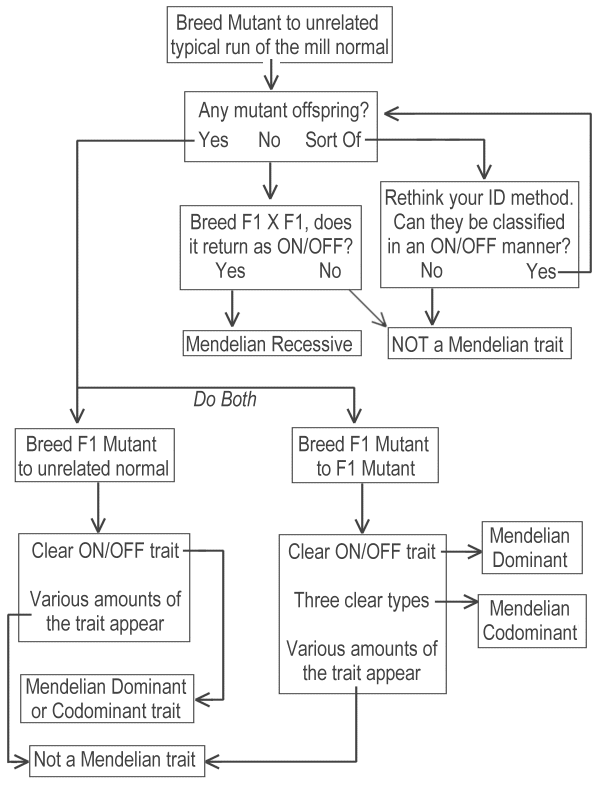 |
||
Determining if a trait is MendelianStep 7:Possible dominant or codominant gene. This step has two separate parts. a- Raise up an F1 mutant and breed it to another unrelated normal. The results of this will help determine which inheritance pattern it follows. Can the offspring be classified in an on/off manner?b- Raise up F1 mutants and breed them to each other, F1 X F1 subling. The results of this will help determine which inheritance pattern it follows. Can the offspring be classified in an on/off manner?Yes, two distinct phenotypes appear.  |
||
[Home] [Digital Editions] [CMG Genetics Tutorial]
[Serpwidgets Genetics] [Links] [Contact]
Cornsnake Morph Guide is a registered trademark of Charles Pritzel
All content on this site is copyright © 2004-2012, Charles Pritzel